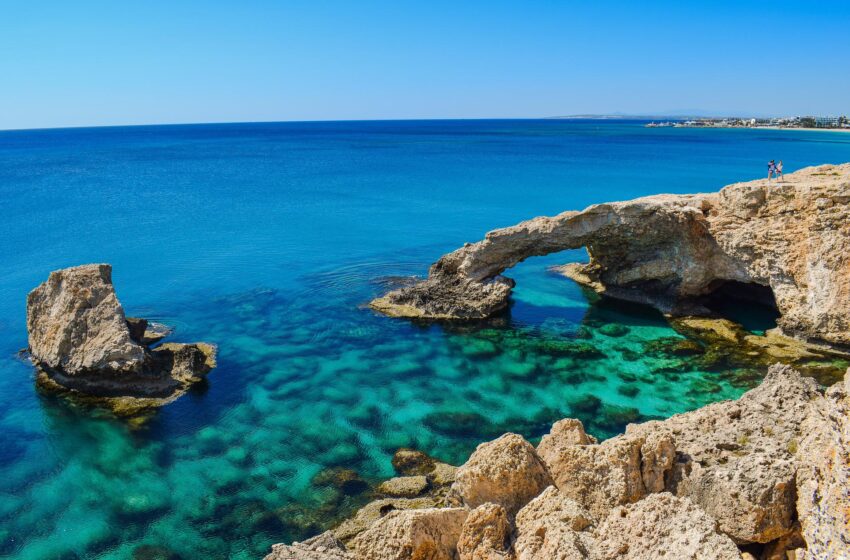
Cyprus’ Only Travel Guide You Need For A Great Trip in 11 Easy Steps
- Destinations Europe
Cruisit Team
- July 30, 2022
- 0
- 4837
- 73 minutes read
Cyprus’ Background
There is evidence that the earliest human life in Cyprus goes back to around 8,000 BC, stone age farmers, then pottery and metal manufacturers around 4,000 BC, and bronze by 2,500 BC. They then developed writing and progressed after 1,500 BC. Cyprus had a highly cultured society with several cities and palaces. Trade flourished with other sections of the Mediterranean, and contact with foreign civilizations was widespread. But, after 800 BC, the Middle East saw the rise of a succession of powerful empires. The Assyrian Empire was the first. The Assyrians never captured Cyprus, but they forced its kings to pay tribute from 708 BC until 669 BC. Cyprus was therefore compelled to surrender to Persian authority in 545 BC. After 333 BC, the Persians were defeated by the Greeks headed by Alexander the Great. Alexander’s dominion was divided after he died in 323, Ptolemy, one of them, conquered Egypt and came to control Cyprus after a period of conflict, and Greek culture became prominent on the island. However, a new power, Rome, emerged.
Romans eventually conquered Cyprus in 58 BC and became part of its empire. Cyprus later flourished under Byzantine Empire until its decline in the 12th century and became independent in 1184, although it was short-lived. England conquered the nation 7 years later and then was sold to a Frenchman by the name Guy de Lusignan and remained under his dominion for three centuries. In the 14th Century, the Italian towns of Genoa and Venice became more wealthy and strong, threatening Cyprus’s independence. By 1425, the Mamelukes of Egypt then attacked Cyprus. However, Cyprus came to be under Venetian authority. The Ottoman Turks, on the other hand, were suddenly a rising force in the Mediterranean and took Cyprus in 1571.
Most Cypriots first embraced Turkish control, preferring it to the repressive Venetian rule, with the feudal system being abolished. Nonetheless, disease hit Cyprus at regular intervals, leading to rebellions against Turkish control. By the 18th century, Britain rose into power, especially after opening the Suez Canal in Egypt, it wanted to secure its access to India and were granted rule over Cyprus in 1878, even though the Ottomon’s were technically still sovereign. The Turks sided with Germany in World War I in 1914 and Britain conquered Cyprus, making it a British Colony in 1925. However, riots erupted in 1931, with Greek Cypriots desiring a union with Greece and Turkish Cypriots supported the British control. Followed by a series of bombings in 1955 and civil unrest until Cyprus gained its independence in 1960.
However, in 1963, the Turks refused Greeks suggestion for constitutional amendments resulting in internal conflict. The UN dispatched a peacekeeping force in 1964 with no solution in reach, followed by hardline Greeks coup in 1974 leading to Archbishop Makarios being deposed then fled to exile. As a result, Turkish soldiers invaded Northern Cyprus in July 1974 and the island got divided. The Turkish side declared itself the Turkish Federated State of Cyprus and achieved complete independence by 1983 established as the Turkish Republic of North Cyprus. Unfortunately, the divide in Cyprus remains, but it certainly is more peaceful. The Southern, Greek, side joined the EU in 2004 and became part of the eurozone in 2009 resulting to a sever economic downturn by 2013. However, the economy is recovering. Nicosia continues to block EU efforts to build direct commercial and economic linkages to north Cyprus in order to entice the Turkish Cypriot community to accept reunification.
Cyprus’ chaotic and multifaceted past has left historic riches strewn over this island, desired by every conqueror with an eye for a reward. Neolithic settlements, Bronze Age and Phoenician graves, ruins of once-mighty city-kingdoms, Roman mosaics, hilltop castles, and Byzantine churches containing a plethora of renowned frescoes were spread throughout the landscape. While walking around the cities, you can see the architectural heritage of the Lusignan, Venetian, and Ottoman periods. Cyprus may welcome you to relax on the beach, but delve into its history and you’ll discover the full history of the Mediterranean.
“The hidden treasure of the Mediterranean. Beyond the sun-kissed expanses of beach, you’ll find an island with a rich heritage and unrivaled scenery, steeped in legend, and packed with ancient treasures.“
The birthplace of Aphrodite, the goddess of love, has been battled over throughout history, and it is still divided today into a northern Turkish component, known as the Turkish Republic of Northern Cyprus, and recognized only by Turkey, and the remainder of Cyprus, which consists of Greek speakers. Ongoing attempts are being made to rejoin the two parts, but for the time being, traveling north will require crossing the line of separation. Fortunately, this is a simple and painless process.
Crossing the line between the South and the North allows you to experience not just the island’s complicated and sad modern-day history, but also the two Cypriot populations. Greek Cypriot and Turkish Cypriot communities are fundamentally distinct but strikingly similar, united by the continued importance of traditional family life and a rich history in which cuisine cultures and folk practices have merged, yet divided by belief. One thing is certain though, everywhere you go on the island, the genuine and warm Cypriot friendliness is abundant.
Thanks to the terrain and Mediterranean environment, outdoor activities is what you should be doing. Cyprus’ is full with sun-soaked expanses of sand, and there’s a beach for everyone, from wild and windswept to family-friendly and crowded. Every water sport imaginable is available, from scuba diving to skimming the top on a kite- or windsurf board. If all that blue gets to you, head into the interior, where wildflower-studded meadows and valleys of thickly planted vineyards sweep up to a pine-clad mountain spine providing hiking, bicycling, and, yes, winter skiing.
Cypriot food is exquisite, with wealth in its origins, and influences from Greece, Turkey, and the Middle East, will certainly leave your taste buds begging for more. Meze is a fantastic way to get to know the local cuisine, tantalizing the taste buds with a feast of little dishes ranging from creamy hummus to kebabs or afelia (red wine-cooked pork) and everything in between. Cypriot cookery, which is heavily inspired by Turkish, Greek, and Middle Eastern food traditions, has its own culinary stars, such as haloumi (hellim in Turkish) and kebab favorite sheftalia (şeftali kebap in Turkish; grilled sausages wrapped in caul fat). Don’t forget about the sweets. Sweet delicacies flavored with almonds, rose water, and pistachios range from soothing rice puddings to deliciously sticky baklava.
From Roman and Greek remains to medieval castles, Byzantine churches, and Turkish mosques, Ancient Cyprus has a lot to offer. With miles and miles of beautiful beaches, mountains and valleys covered with Cyprus trees, quaint towns and vineyards, and deep blue sea encircling it all. So enjoy in this island’s meze heritage, experience the love on its beautiful beaches, trek the inlands or dive the shores, visit Nicosia and cross the green line into northern Cyprus to witness a completely different and un-touristic version of the country, and there’s even a possibility of skiing in winter!
To enjoy Cyprus the most, you will want to stay on the move in order to see and do as much as you can of what Cyprus has to offer for tourists. In this Cruisit Cyprus travel guide, we give you a plan that falls halfway in the middle, with a good mix of leisure and discovery. Enter the country and fully experience and explore this Mediterranean dream destination. The Cyprus trip schedule that we provide below is best experienced in the country’s high season in the summer, but you can also enjoy the shoulder season too. Your Mediterranean fantasies will come true, with warm days beside sapphire waters in the shade of historic buildings, and surrounded the sun.
Also, in our travel guide to Cyprus, we will provide you with all the information you will need to navigate the country at ease. Cyprus’ highlights, tips, transportation, top places and attractions, a handcrafted itinerary in Cyprus, and more will be provided for you as you read through. If you are excited enough by now, let us dig right in!
- Explore Paphos (Pafos, o, and Baf), with its famous ancient site, charming old town, and bustling nightlife.
- Stroll around Nicosia (Lefkosia or Lefkoşa), see the Cyprus Museum before crossing the green line into northern Cyprus, which has Turkish influences, and enjoy a steam bath at old Omeriye Hamam.
- Explore the wine area near Omodos
- Trek through the Troödos Mountains from one lovely small painted Byzantine church to the next.
- Explore seaside Kyrenia, with its Byzantine castle and cobblestone alleyways.
- Dive outside of Larnaca
- Lie on the beach or dance till you drop at Agia Napa (also known as Ayia Napa, and Ayia Napa).
- Learn about ancient Greeks In Kourion
- Salamis is Cyprus’s most important archaeological site.
- Take the picturesque journey to Aphrodite’s Rock and Beach (Petra tou Romiou) for a swim or to watch the sunset.
- Turkish Cyprus is more affordable and less developed than the rest of Cyprus, and it is very easy to cross the border these days.
- In the winter, you may spend the morning on the beach and the afternoon skiing in the mountains.
- You should have no trouble speaking English as a former British colony.
- Cyprus is a fairly secure destination to visit, however pickpocketing occurs, as it does across Europe. So, especially in busy situations, store your valuables in a secure place and your money in a cross bag or money belt.
- The Schengen Agreement allows nationals of practically all nations to visit this country. Citizens of the United States and Canada can enter Cyprus without a visa for 90 days.
- You can pay in cash, and most credit cards are accepted. Just bear in mind that the Euro is the country’s currency.
- Of course, get travel health insurance.
- Cyprus is not an inexpensive place to visit.
- The official language of Cyprus is Greek Cypriot, however Turkish Cypriot is widely spoken in the north. English is widely spoken on both sides.
- Cyprus, like many Mediterranean countries, has a highly warm and inviting population.
- North Cyprus is exclusively recognized by the Turkish government, and all aircraft and ferries pass through Turkey.
Crime & Scams in Cyprus
Cyprus is regarded as a fairly safe destination, with very little violent crime. Crime against visitors is uncommon in Cyprus, but common sense guidelines apply when it comes to keeping your possessions safe in your hotel room and when out in restaurants and other attractions. Buy your own beverages and remain with friends to avoid the chance of drink spiking. while going out at night. Cyprus maintains a zero-tolerance policy on drug possession and usage, and anybody found using or possessing drugs may face a large fine or a prison sentence.
Be vigilant, particularly if you are in cramped public places, near official buildings, crowded attractions, or on public transportation. Avoid poor areas of the city. Take care on city streets, especially after dark or if you are on your own. Don’t carry large amounts of money or wear valuable watches or jewelry. Avoid using your mobile phone in the street. Also, please don’t brag and show off in Cyprus. It’s a laidback place, so be humble.
Healthcare in Cyprus While Traveling
Cyprus has an outstanding healthcare system that is on par with that of other industrialized countries, according to the World Health Organization. All major Cypriot cities have government hospitals. Other parts of the nation have smaller government-run hospitals and clinics.
Before every trip, make sure you are up to date on all routine vaccinations. Among the key recommended vaccines globally are chickenpox (Varicella), diphtheria-tetanus-pertussis (DTP), influenza (flu), measles-mumps-rubella (MMR), polio, hepatitis, typhoid, and shingles. If you will be in contact with wildlife, you may want to consider getting a rabies vaccination.
When visiting Cyprus, you are not legally required to purchase travel medical insurance and can be denied entry if you don’t have one. Also, it is always important to have comprehensive medical coverage when traveling because you never know what you could encounter while overseas.
Only eat foods that are cooked and served hot, avoid food that has been sitting on a buffet, and eat raw fruits and vegetables only if you have washed them in clean water or peeled them.
Only drink beverages from factory-sealed containers, avoid ice because it may have been made from unclean water, and only drink pasteurized milk.
Always wash your hands with soap and water for 20 seconds, especially after using the bathroom and before eating. If soap and water aren’t available, use an alcohol-based hand sanitizer that contains at least 60% alcohol. Also, keep your hands away from your face and mouth.
Cyprus has a Mediterranean climate, with daytime temperatures ranging between 30 and 33 degrees Celsius. The weather in Cyprus is nice almost all year, however, it can occasionally turn extremely humid and sticky. With 300 days of sunlight each year, determining when is a horrible and good time to come is challenging. Temperatures typically vary from 17°C in the winter to 31°C in the summer. That is to say, there isn’t a bad time to visit Cyprus, especially if you plan your trip outside of the scorching summer months. However, certain times of year are unquestionably better than others for visiting.
Shoulder Season
Cyprus has a Mediterranean climate, with daytime temperatures ranging between 30 and 33 degrees Celsius. The weather in Cyprus is nice almost all year, however, it can occasionally turn extremely humid and sticky. With 300 days of sunlight each year, determining when is a horrible and good time to come is challenging. Temperatures typically vary from 17°C in the winter to 31°C in the summer. That is to say, there isn’t a bad time to visit Cyprus, especially if you plan your trip outside of the scorching summer months. However, certain times of year are unquestionably better than others for visiting.
High (Peak) Season
The summer months from June to early September are the most popular for organizing a vacation to Cyprus and are considered high season. Temperatures range from 30 to 38 degrees Celsius at this time of year. Temperatures surge over 30°C (86°F) to oven-like levels, despite the fact that the Mediterranean is lovely and always warm enough to swim, and yet prices skyrocket. Flights and hotel rooms are simple to get during this time, all attractions, restaurants, and other businesses are open, and there are lots of activities and festivals to keep you busy. Hordes contribute to the party scene on the coast, particularly in Agia Napa, Lemesos (Limassol), and Pafos, although inland is quieter; it’s easy to dodge the throng by heading to the hills.
Off-Season (Low Season)
The low season in Cyprus runs from November through March when there are fewer tourists than in the summer. As March comes to a conclusion, there is less rain, less overcast, and more daylight hours. Many hotels also reopen after being closed all winter, making March an ideal time to visit Cyprus because there are fewer guests and a bit more sunshine to make your holiday more enjoyable. In January, snow provides a brief ski season to the Troödos Mountains and Mt Olympus, and the view, particularly in the highlands, is breathtaking. In terms of drawbacks, storms from the Mediterranean cause cloudy and rainy days, and many shops and attractions close.
By Plane
The country has two international airports, Larnaka and Pafos, with frequent direct flights from London, Manchester, and other minor airports in the United Kingdom. Larnaca International Airport is Cyprus’s busiest airport. There are 84 airports worldwide with direct flights to Larnaca, split among 79 locations in 36 countries, including Egypt, Athens, Amsterdam, and Brussels.
By Boat
Cyprus has a long marine history dating back thousands of years. Sailing has long been a part of Cypriot life due to the island’s ideal position, with easy access to three continents and, of course, being an island. The sea is the lifeblood of Cyprus, whether for business or pleasure, and throughout the years, nautical expertise has been passed down down the generations, making Cypriot sailors some of the greatest and most experienced in the world. There are marinas at Limassol, Larnaca, Ayia Napa, Latchi, and many more places.
When entering Cypriot waters, the Cypriot courtesy flag must be flown. Everyone should stay on board until all clearance procedures are finished. The port administration will need the ship’s paperwork upon arrival. Insurance documentation may also be required. Crew lists must be printed; at least five copies are suggested.
You must purchase a Marina Pass as soon as you arrive. Submit two passport-size pictures to the Marina Office, and put your name, surname, passport number, country, yacht’s name, and occupation in block letters behind one of the two images. Your pass must be left at the marina office upon leaving, but it must be carried with you at all times. You will have problems accessing and exiting the Marina without it. Visitors must also show identification and be greeted at the entrance.
Getting around Cyprus is quite simple, whether people want to go independently or by public transit. To make the most of their trip, visitors frequently combine the usage of Cyprus buses with taxi services or car rental.
By Car
The most convenient method to navigate around Cyprus is on your own two feet. All of the main international rental firms have offices at the two airports in the south as well as in tourist-friendly towns. There are also other local agencies on both sides of the island. In the summer, book a car ahead of time to lock in lower prices and ensure availability; at peak seasons, all vehicles may be snapped up.
To hire anything with an engine greater than 50cc, you must have a license valid in your home country and be 21 or older in the south and 18 or older in the north. While renting a car from the south to the north is technically doable, rental companies discourage it. When you pick up the vehicle, inquire about any additional insurance that may be required. It is not feasible to drive a hired car from the north to the south.
The roads in Cyprus are in decent condition, however driving abilities vary and the island has a high accident rate. Both sides of the island have left-hand turns. Cyprus Driving is a useful and thorough resource for information about local licenses and driving restrictions. Remember that gasoline alternatives are limited in rural regions; fill up before heading into the hills. Open-top 4WDs are a popular method to reach out to more isolated landmarks and beaches, while scooters and motorbikes can be rented in most tourist destinations.
By Taxi
Taxis are available across Cyprus, with moderate costs, and are a popular mode of transportation for both locals and visitors. Taxis in the south employ meters, which are available at taxi stands in most cities and tourist regions. They may also be reached by phone – there are many of firms to choose from, so ask a local for the best number to dial.
North Cyprus taxi services are available when needed, with fares arranged before the trip begins, although prices are low: a cab from North Nicosia to Kyrenia costs approximately 100TL ($1). Service taxis – long-distance shared taxis that transport up to eight passengers and travel on fixed routes from city to city, charging by the seat – may be found on both sides of the island. The Travel & Express consortium organizes these in the south; in North Cyprus, they are managed by various local operators and are known as dolmuş.
By Bus
Traveling by bus in Cyprus is affordable and convenient, albeit bus services varies significantly between the Republic and North Cyprus. It’s also worth noting that there are no direct bus services over the Green Line; in most cases, you’ll need to take one bus to Nicosia (Lefkosia) or North Nicosia (Lefkoşa), then cross the border on foot and catch another bus on the other side. .
The bus system is extensive. Regular InterCity Buses connect the main cities and many rural villages in the south, and there are helpful urban networks in the capital as well as Larnaka, Lemesos, and Pafos. Monday through Saturday, with a limited program on Sunday. Almost all bus services end around 6 p.m. It should be noted that services to small settlements may be limited to once or twice a day or on specific days.
Fares are affordable, and tickets may be purchased on the bus using cash. Travel within the five southern bus areas costs €1.50 ($1.70) each trip, €5 ($5.80) per day, €15 ($17.30) per week, and €40 ($46) for a month of unlimited journeys. InterCity Bus prices between regions are relatively affordable; for example, a trip from Larnaka to Nicosia costs €4 ($4.60). A one-day ticket with unlimited travel costs €15 ($17.30).
SIM Cards & Calls in Cyprus
A Cypriot SIM card costs 2 EUR (2.10 USD) at Epic (previously MTN), Cytamobile (Vodafone), PrimeTel, and Cablenet shops and resellers such as convenience stores and supermarket stores. SIM cards are also available at Larnaca International Airport and Paphos International Airport. There are packages available starting at 7 EUR for 1 GB valid for 10 days, ideal for a brief vacation to Cyrpus.
Alternatively, you may also get a prepaid eSim card from a company like Airalo, SIMCorner, HolaFly, or Nomad. All the providers offer data-only plans that may be used with an eSim-enabled phone, so make sure your phone is compatible. It is also possible to sign up for a Solis WiFi Hotspot. Check before you travel because they only serve select areas. Airalo provides the most extensive coverage of over 180 nations.
Local Internet & WiFi in Cyprus
More than 90% of households in Cyprus have an internet connectionCyprus has a Mediterranean climate, with daytime temperatures ranging between 30 and 33 degrees Celsius. The weather in Cyprus is nice almost all year, however it can occasionally turn extremely humid and sticky. With 300 days of sunlight each year, determining when is a horrible and good time to come is challenging. Temperatures typically vary from 17°C in the winter to 31°C in the summer. That is to say, there isn’t a bad time to visit Cyprus, especially if you plan your trip outside of the scorching summer months. However, certain times of year are unquestionably better than others for visiting., so you won’t be lacking in connectivity while in Cyprus. Almost all hotels and other types of lodging will provide free wifi as part of your stay. In Cyprus, the average download speed is roughly 16 Mbps.
Top Places in Cyprus
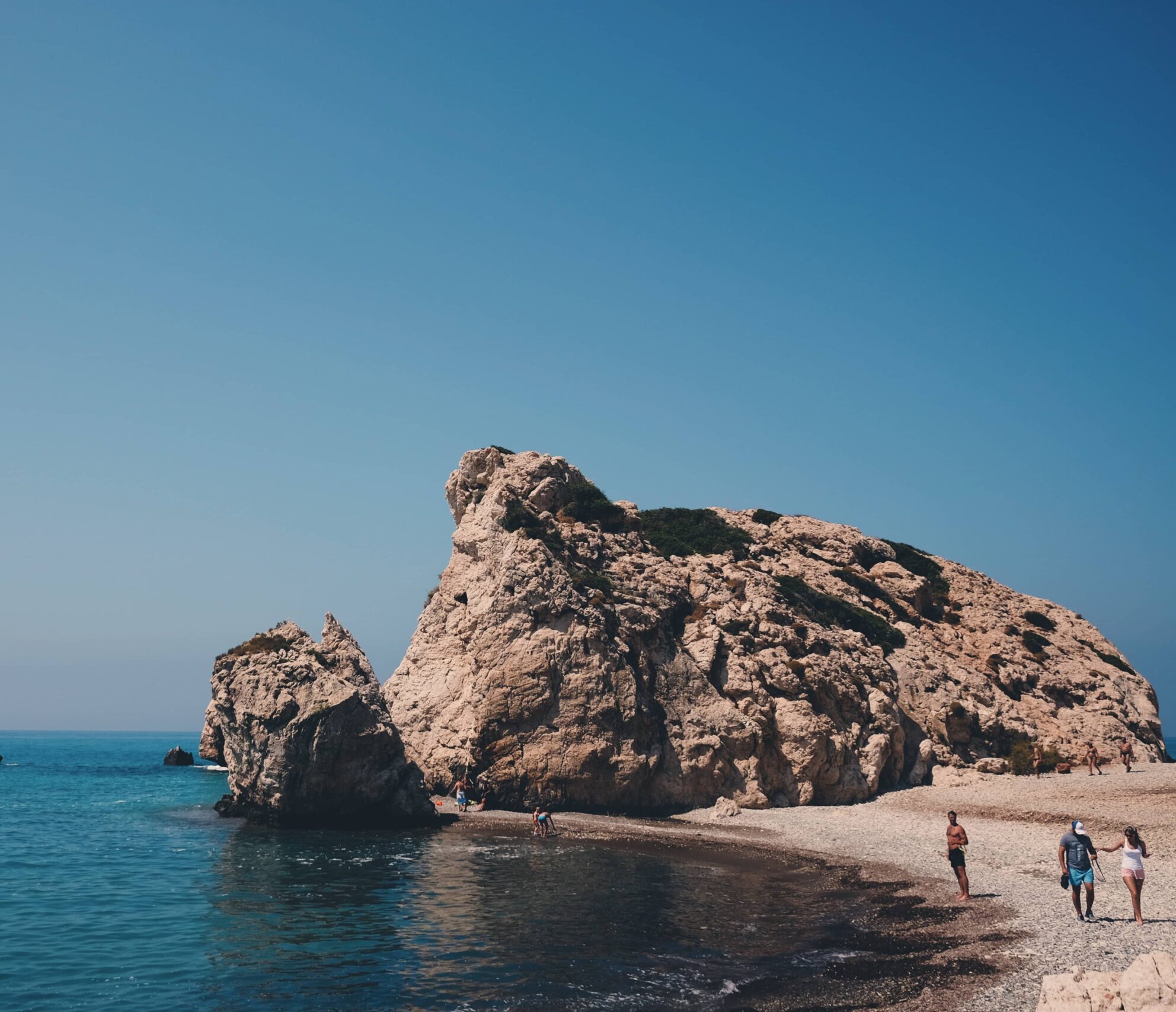
Petra tou Romiou
Aphrodite’s Rock, also known as Petra tou Romiou, is a sea stack near Paphos, Cyprus. It is located off the coast along the major route between Paphos and Limassol. The area’s natural beauty, along with its mythological significance as the birthplace of Aphrodite, makes it a popular tourist destination. The sea in this location is often choppy, which discourages tourists from swimming there. Climbing the rock is not authorized. Nearby are a restaurant, a tourist pavilion, and the Aphrodite Hills resort.
Nissi Beach
Nissi Beach is a renowned beach in the Cyprus resort of Ayia Napa and stretches the length of its own cove, gets its name from the nearby little islet of Nissi. The beach is 500 meters long, and the water is pristine enough to earn the beach the blue flag distinction. Nissi Bay Beach Bar is popular with both residents and visitors, and it hosts events such as foam parties and catwalks.
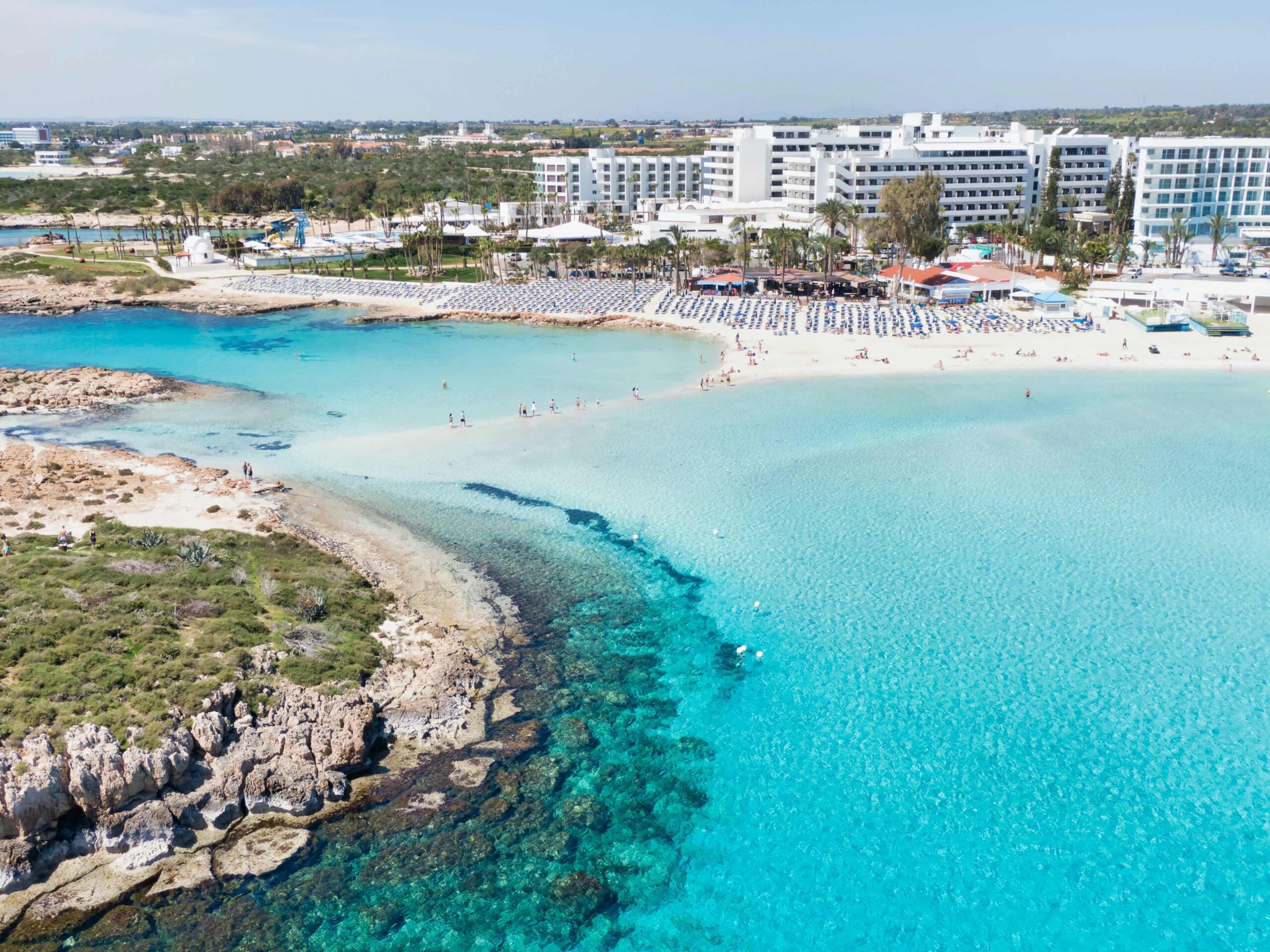

Tombs of the Kings
The Tombs of the Kings is a major necropolis in Cyprus located approximately two kilometers north of Paphos harbor and a UNESCO World Heritage Site. The graves are carved into the local rock and sometimes resemble living residences. Archaeological digs are ongoing at the site. The underground tombs are cut out of solid rock and are supposed to have been the burial locations of Paphitic aristocracy and senior officials up to the third century AD. Some tombs have Doric columns and frescoed walls.
Paphos Archaeological Park
Paphos Archaeological Park, a World Heritage Site, which is still under construction, is located in Paphos, southwest Cyprus. Its monuments and sites date from prehistoric periods through the Middle Ages. Among the most notable discoveries to date are four huge and intricate Roman villas: the House of Dionysos, the House of Aion, the House of Theseus, and the House of Orpheus, all of which have well preserved mosaic floors, particularly an Orpheus mosaic. Excavations have revealed an agora, asklipieion, basilica, odeion, and Hellenistic-Roman theatre, as well as the “Tombs of the Kings” necropolis.
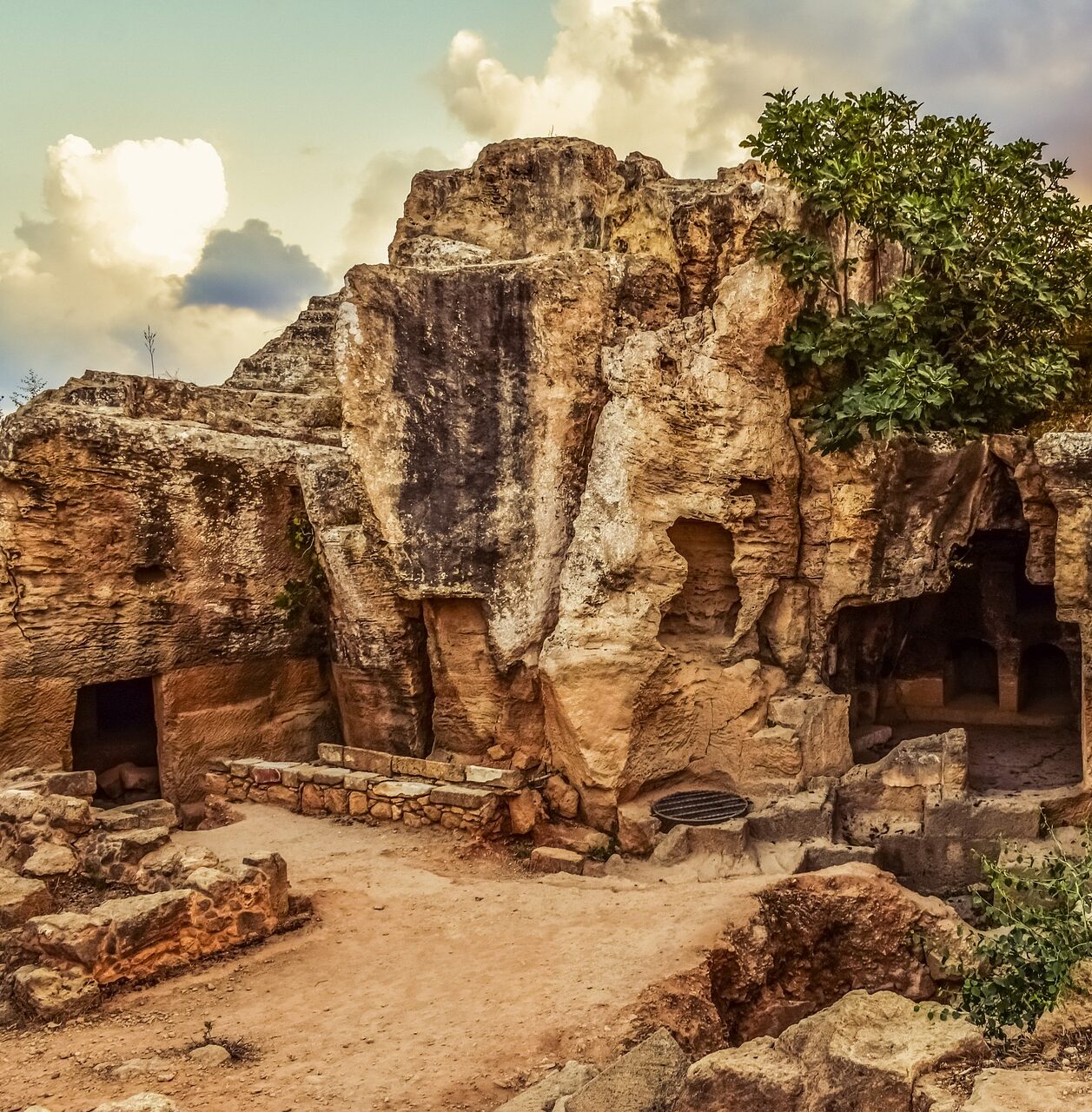

Kykkos Monastery
Kykkos Monastery is one of Cyprus’s wealthiest and most well-known monasteries. Byzantine emperor Alexios I Komnenos erected the Holy Monastery of the Virgin of Kykkos at the end of the 11th century. The old monastery is no longer standing since it was repeatedly burnt down Kykkos Monastery is located at an elevation of 1318 meters on the northwestern flank of the Troödos Mountains. Archbishop Makarios III, the first President of Cyprus, began his religious career as a monk in Cyprus and his grave is located 3 km west of the monastery.
7-day Itinerary in Cyprus
Days 1 and 2
Arrive at Nicosia
Whether you fly into Larnaca or Paphos, we recommend starting your journey in the undervalued capital, Nicosia.
Though it is located in the center of the island and has no shoreline, Nicosia is an immensely fascinating and lively city that is well worth seeing, especially if you want to learn more about Cyprus’s history and culture.
Nicosia is Europe’s last split capital, with two separate sides to its history. The majority of your stay in Cyprus will be spent in the southern portion of the city, which is formally part of the internationally recognized and EU member state Republic of Cyprus.
Despite being the largest city and capital of Cyprus, Nicosia has a lot to offer in just one or two days. Spend your day seeing the historic sites and visiting the museums.


We also recommend spending some time in Nicosia on the Turkish side of the city. You can simply cross the border and see the ancient monuments of North Nicosia in a few hours – just remember to carry your passport (you will not receive a stamp) and that they use Turkish Lira rather than Euro.
There are various fun and intriguing things to do in Nicosia, and the city attracts a fraction of the tourists that Cyprus’s coastal cities do. If you want to experience the vibrant energy of Cyprus’s capital while venturing a little further off the beaten route, a stop in Nicosia is a must.
Things to consider seeing while in Nicosia are Selimiye Mosque, Cyprus Museum, Byzantine Museum, Ledra Street, Famagusta Gate, Büyük Han, and Folk Art Museum. Also, consider taking a day trip to Fikardou Village.
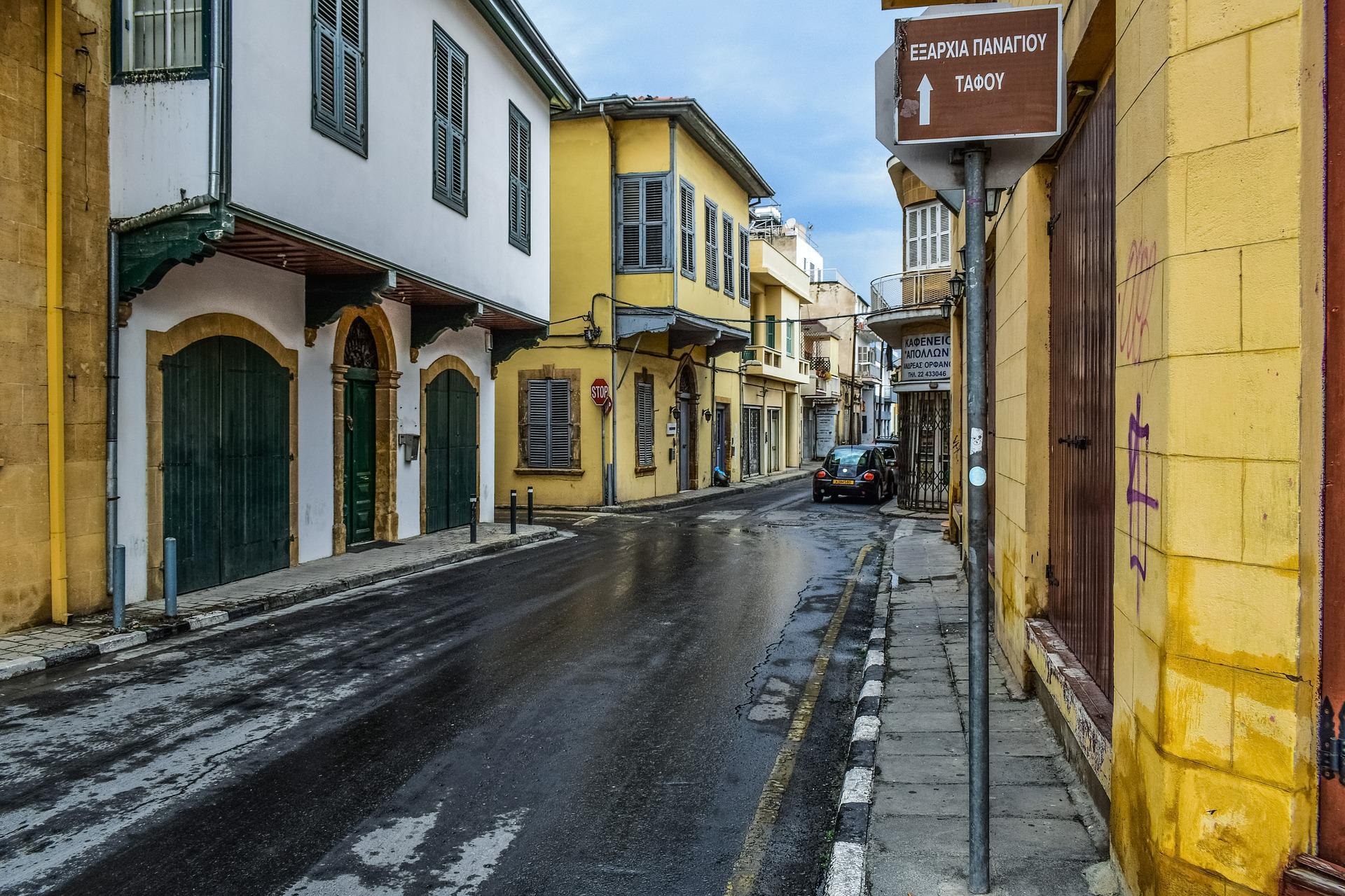
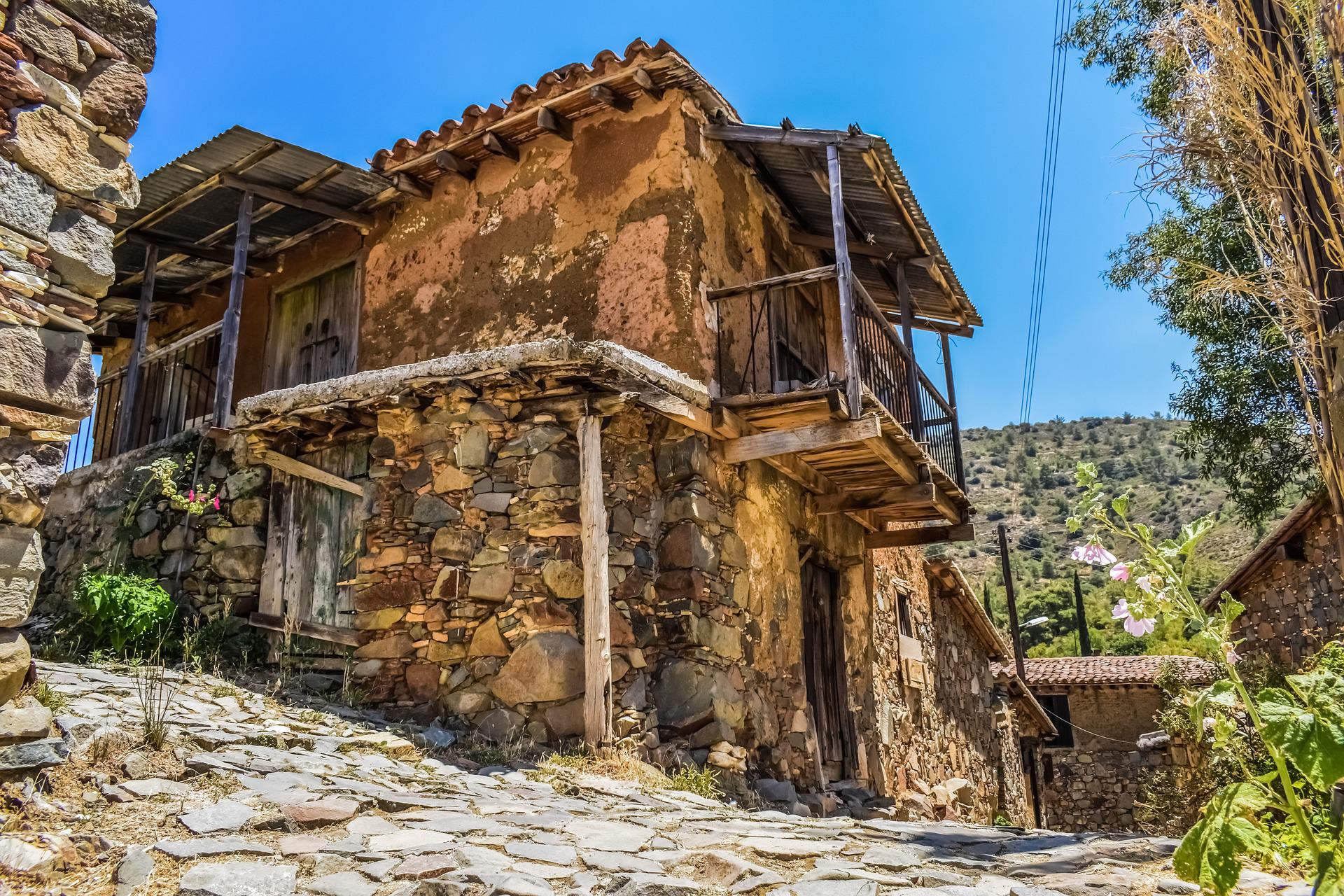
Though Nicosia is not the most visited city in Cyprus, it is the country's economic and commercial center, and there are some excellent locations to stay. If you're looking for a place to stay in Cyprus's capital.
- Backpacker:
- Budget:
- Mid-range:
- Luxury:
The 3 Rooms Boutique Hotel
MAP Boutique Hotel
Nex Hostel
When it becomes dark, a foreign city may be twice as dangerous - especially if you don't understand the language and are unfamiliar with the area. There is no reason to be alarmed about walking home alone in the dark as there is not enough crime recorded in Nicosia to warrant any bit of worry. You can walk safely at night and never worry about crowded areas or unlit alleys or streets, but you can always take a taxi, if you don't feel comfortable. However, be wary of petty crime by taking precautions mentioned in the safety section above.
Days 3 to 5
Off to Paphos
After finishing the first part of your trip in Nicosia, it’s time to drive to the coast and spend a few days in the old city of Paphos.
Paphos is regarded as the ancient birthplace of the Greek goddess of love and beauty, Aphrodite, and is blessed with both a magnificent shoreline and various intriguing historic landmarks.
There are so many things to do in Paphos that you could easily spend your whole vacation there; nevertheless, three days should be enough to see a lot of great things while still giving you plenty of time to relax by the Mediterranean.
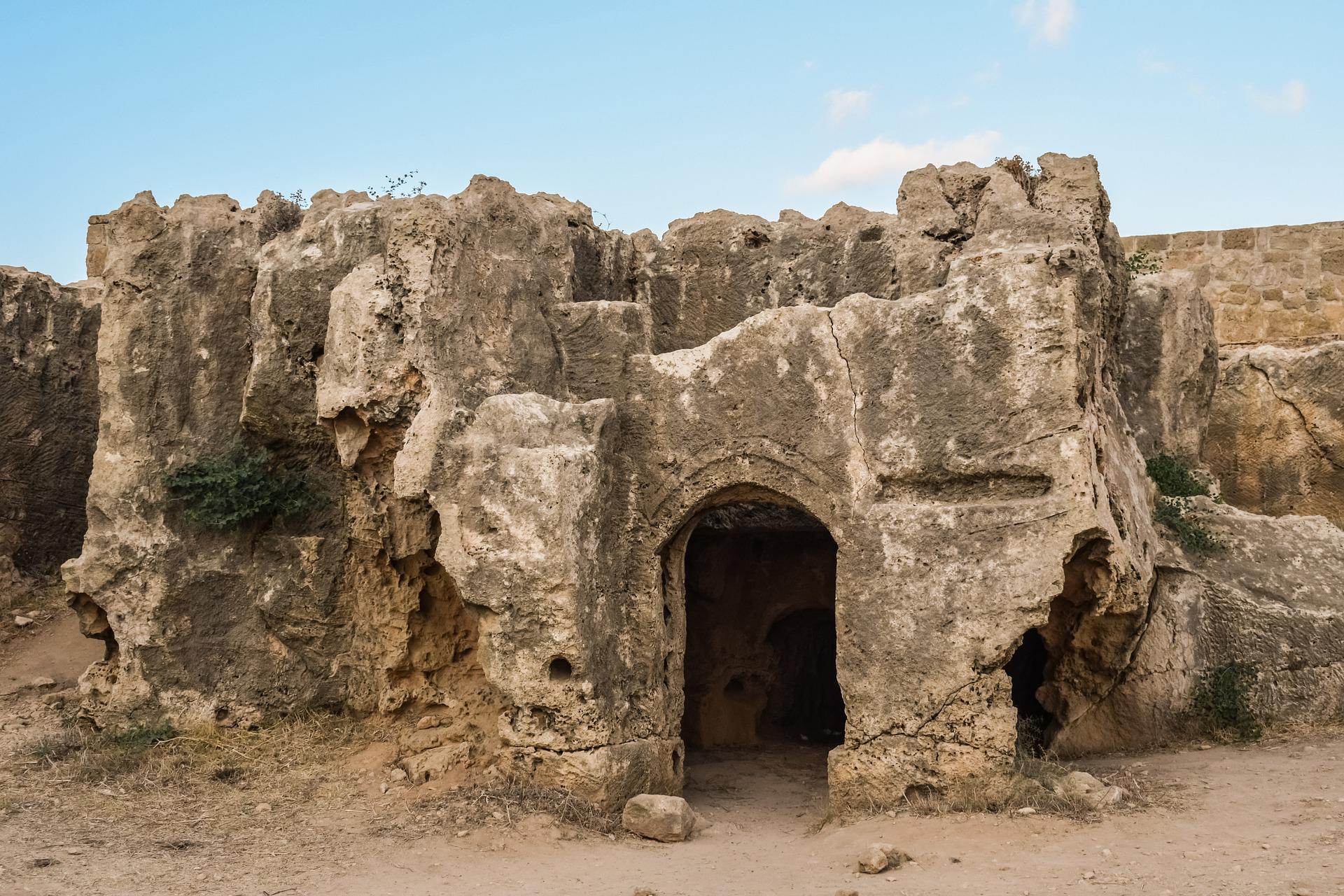

The spectacular Tombs of the Kings, as well as the stunning Hellenistic mosaics in the Kato Paphos Archaeological Park, are among the must-see ancient sites in Cyprus.
If you prefer natural surroundings, take a trip north to the Akamas Peninsula, where you may go for a trek along the coast or swim at a private beach. Lara Beach is a short distance south, and depending on the season, you may see newborn sea turtles.
Aphrodite’s Rock, one of the most stunning natural and historical landmarks surrounding Paphos, is claimed to be the location where the namesake goddess was born from sea foam. You may also go swimming in the stunning setting for free.
You can spend one day seeing the historic monuments of Paphos, another enjoying the beaches and natural sights, and still have another day for an excursion into the Troödos mountains to sample Cypriot wines, and visit beautiful monasteries, and observe typical village life.


With so much to see and do, Paphos is one of the most popular areas for travelers to base themselves in Cyprus. As a result, there are various locations to stay in Paphos to suit all personalities and travel preferences. If you're seeking for the right spot, check out these suggestions:
- Backpacker:
- Budget:
- Mid-range:
- Luxury:
Casa Mespilea
Pyramos Hotel
Anemi Hotel & Suites
When it becomes dark, a foreign city may be twice as dangerous - especially if you don't understand the language and are unfamiliar with the area. There is no reason to be alarmed about walking home alone in the dark as there is not enough crime recorded in Paphos to warrant any bit of worry. You can walk safely at night and never worry about crowded areas or unlit alleys or streets, but you can always take a taxi, if you don't feel comfortable. However, be wary of petty crime by taking precautions mentioned in the safety section above.


Days 6 and 7
Head to Larnaca
The final stop on our 7-day Cyprus itinerary is Larnaca, the third-largest city. This is a reasonable concluding stop on your journey because Larnaca is home to the island’s main airport.
Most of the sights and attractions in Larnaca can be viewed in one day, however we recommend spending one of the two days enjoying all of the wonderful things found on the trip from Paphos to Larnaca. Visiting sites like as the Kourion Archaeological Site, Kolossi Castle, Kalymnos Beach, and many more.


Once in Larnaca, you may spend your time exploring the charming old town and admiring the Church of St Lazarus as well as the liveliness of the beach promenade. You may also leave the city center to see the Larnaca Salt Lake (which is home to migrating flamingos throughout the winter!) and the Hala Sultan Tekke.
If you want to experience more of Cyprus’s spectacular natural landscape, head north to Ayia Napa (approximately 45 minutes from central Larnaca) and marvel at the stunning sea caves and crystal blue seas, but also the stunning underwater museum.
If you have more than a week you can easily extend your stay especially If you’re interested in exploring more of the mountain village life, you could spend a night or two in a family-run bed and breakfast in the Troodos Mountains.
Larnaca is a popular area to stay for travelers to this Mediterranean island country due to its closeness to both the sea and Cyprus' main airport. As a result, there are several lodging alternatives in Cyprus' third-largest city. If you're planning a trip to Larnaca, here are our top recommendations for places to stay:
- Backpacker:
- Budget:
- Mid-range:
- Luxury:
Mikes Kanarium City Hotel
Les Palmiers Beach Boutique Hotel
When it becomes dark, a foreign city may be twice as dangerous - especially if you don't understand the language and are unfamiliar with the area. There is no reason to be alarmed about walking home alone in the dark as there is not enough crime recorded in Paphos to warrant any bit of worry. You can walk safely at night and never worry about crowded areas or unlit alleys or streets, but you can always take a taxi, if you don't feel comfortable. However, be wary of petty crime by taking precautions mentioned in the safety section above.
Day 8
This 7-day travel plan to Cyprus hopefully made you enjoy your stay, but also discover a new culture. Whether your flight was on your 7th day or today, start preparing your things and head to Larnaca International Airport which is not more than 15 minutes from the center.
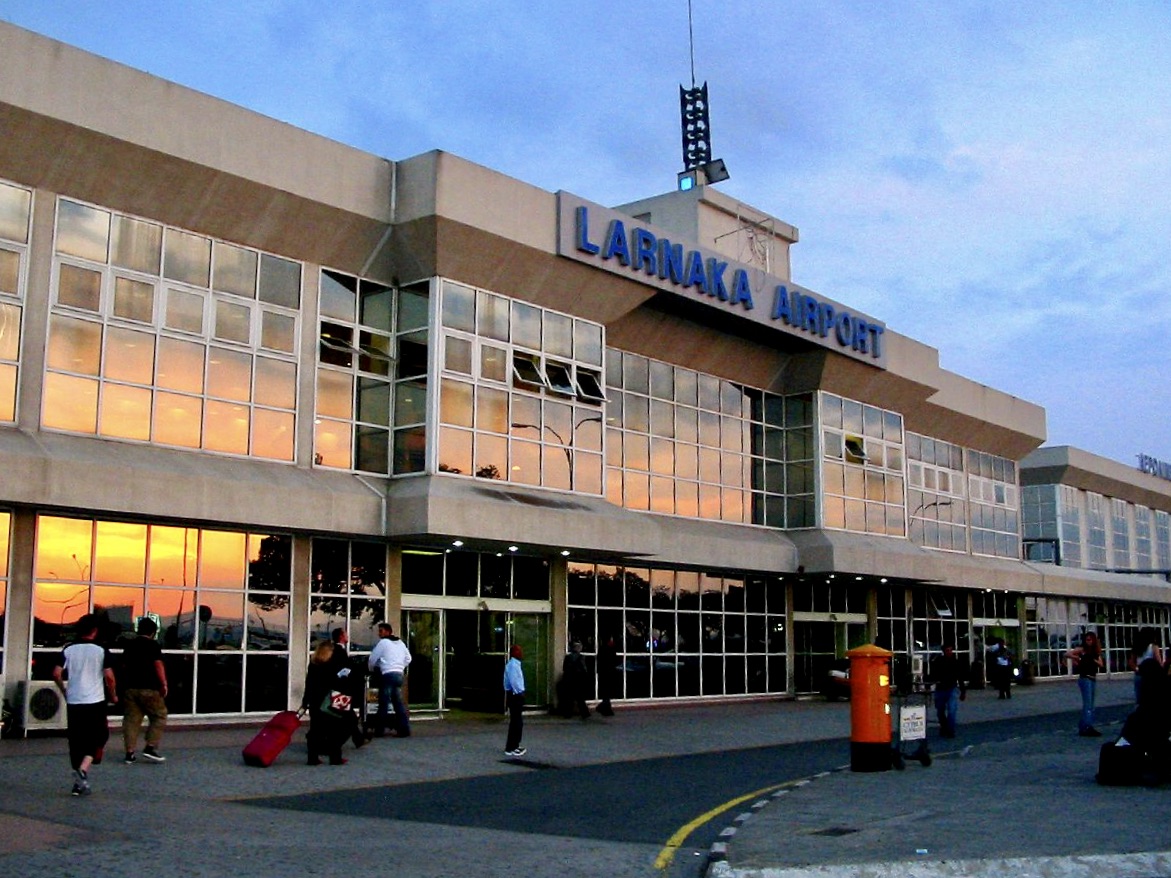
The Most Popular Food in Cyprus
Cyprus food is, predictably, a blend of Greek and Turkish cuisines mainly, but is also inspired by both European nations like France and Italy and the Middle East like Egypt. But, many dishes have a local touch and their own particular flavors. Fresh and local ingredients are frequently used, and seafood and vegetable-based meals are popular.

Cypriot Meze
Meze, like tapas, are tiny, delectable meals that can be either meat or fish. There are eateries that just serve meze and sell nothing else. Any vacation to Cyprus should include a meze lunch.
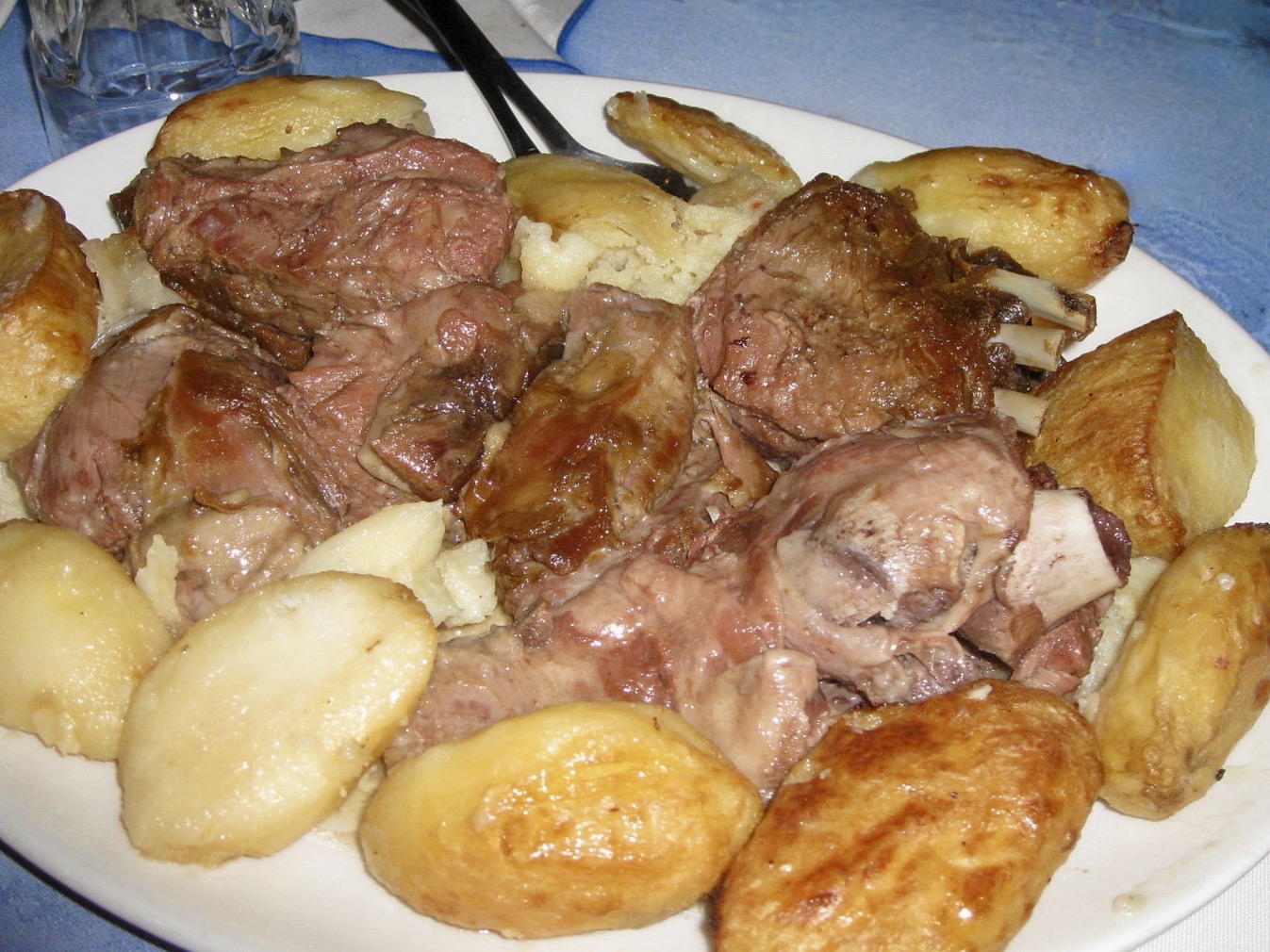
Kleftiko
Roasted lamb meat is a classic meal made using lamb leg meat. It’s been flavored with olive oil, lemon, garlic, and onion. Ofton Kleftiko is baked in baking paper to preserve the luscious meat’s rich smells and juices. Kleftiko is occasionally cooked in portable white ovens with or without potatoes and sold on the streets as a substitute for sandwiches or ‘Souvlakia.’

Halloumi
This is a one-of-a-kind Cyprus cheese manufactured from a blend of cow and sheep milk. It is rough and salty when raw. Because of its hard hardness, it may be grilled, resulting in a softer and more flavored cheese that is highly excellent.

Souvlaki
Souvlaki, or “souvla” as the Cypriots call it, is thinly sliced meat chunks served on top of pita bread with a pickled salad, hummus, and tzatziki. This is another common meal offered at Greek restaurants around the world, so even if you haven’t visited Cyprus, you’ve probably tried it before. But, having it from the source is often accompanied by original flavors.

Taramosalata
Cod or carp roe is blended with bread crumbs or mashed potatoes to form this classic meal. Flavorings include parsley, onion, lemon juice, olive oil, and vinegar.
What's the Travel Budget for Cyprus?
Flights
- Flights start at roughly $30 from nearby countries. Tickets however on average cost around $250 and can cost way more depending on which class and from which country you depart from.
Accommodation
- Nomad Backpacking style travelers can expect to spend around $220 for a week
- Budget travelers can expect to spend around $400 for a week
- Mid-range travelers can expect to spend around $630 for a week
- Luxury travelers can expect to spend around $1,250 for a week
Food Budget (Three meals and drinks)
- Nomad Backpacking style travelers can expect to spend around $20 per person per day
- Budget travelers can expect to pay around $35 per person per day
- Mid-range travelers on average would cost $40 to $65 per person per day
- Luxury travelers can expect to pay around $70 to $120 per person per day
Overall Budget Styles (Not including Flights, Tours, Transportation, or Car Rental)
- Nomad Backpacking style travelers can expect to spend roughly $360 for a week
- Budget travelers can expect to spend close to $650 for one person for a week
- Mid-range travelers can expect to spend approximately $1,100 for one person for a week
- Luxury travelers can expect to spend around $2,110 for one person for a week
Flights
- Flights start at roughly $280 from nearby countries. Tickets however on average cost around $550 and can cost way more depending on which class and from which country you depart from.
Accommodation
- Nomad Backpacking style travelers can expect to spend around $150 for a week
- Budget travelers can expect to spend around $350 for a week
- Mid-range travelers can expect to spend around $700 for a week
- Luxury travelers can expect to spend around $1,100 for a week
Food Budget (Three meals and drinks)
- Nomad Backpacking style travelers can expect to spend around $15 per person per day
- Budget travelers can expect to pay around $25 per person per day
- Mid-range travelers on average would cost $30 to $45 per person per day
- Luxury travelers can expect to pay around $60 to $120 per person per day
Overall Budget Styles (Not including Flights, Tours, Transportation, or Car Rental)
- Nomad Backpacking style travelers can expect to spend roughly $250 for a week
- Budget travelers can expect to spend close to $420 for one person for a week
- Mid-range travelers can expect to spend approximately $710 for one person for a week
- Luxury travelers can expect to spend around $1,750 for one person for a week
Flights
- Flights start at roughly $280 from nearby countries. Tickets however on average cost around $550 and can cost way more depending on which class and from which country you depart from.
Accommodation
- Nomad Backpacking style travelers can expect to spend around $150 for a week
- Budget travelers can expect to spend around $350 for a week
- Mid-range travelers can expect to spend around $700 for a week
- Luxury travelers can expect to spend around $1,100 for a week
Food Budget (Three meals and drinks)
- Nomad Backpacking style travelers can expect to spend around $15 per person per day
- Budget travelers can expect to pay around $25 per person per day
- Mid-range travelers on average would cost $30 to $45 per person per day
- Luxury travelers can expect to pay around $60 to $120 per person per day
Overall Budget Styles (Not including Flights, Tours, Transportation, or Car Rental)
- Nomad Backpacking style travelers can expect to spend roughly $250 for a week
- Budget travelers can expect to spend close to $420 for one person for a week
- Mid-range travelers can expect to spend approximately $710 for one person for a week
- Luxury travelers can expect to spend around $1,750 for one person for a week
Flights
- Flights start at roughly $280 from nearby countries. Tickets however on average cost around $550 and can cost way more depending on which class and from which country you depart from.
Accommodation
- Nomad Backpacking style travelers can expect to spend around $150 for a week
- Budget travelers can expect to spend around $350 for a week
- Mid-range travelers can expect to spend around $700 for a week
- Luxury travelers can expect to spend around $1,100 for a week
Food Budget (Three meals and drinks)
- Nomad Backpacking style travelers can expect to spend around $15 per person per day
- Budget travelers can expect to pay around $25 per person per day
- Mid-range travelers on average would cost $30 to $45 per person per day
- Luxury travelers can expect to pay around $60 to $120 per person per day
Overall Budget Styles (Not including Flights, Tours, Transportation, or Car Rental)
- Nomad Backpacking style travelers can expect to spend roughly $250 for a week
- Budget travelers can expect to spend close to $420 for one person for a week
- Mid-range travelers can expect to spend approximately $710 for one person for a week
- Luxury travelers can expect to spend around $1,750 for one person for a week
If you want to know what to pack, read this list below:
- This is a casual Mediterranean Island with warm weather year-round that tends to be hot in the summer, and mild in the winter, dress accordingly
- Raincoat or Light Waterproof Jacket
- Hiking Boots or Sturdy Sneakers (Shoes You Don’t Mind Getting Wet)
- Sunscreen
- Insect Protection – Repellent and Clothing
- Sunglasses and Sun Hat
- Water Shoes
- Beach Towels/Sarong
- Dry Bag
- Money Belt or Cross Bag
- Portable Medical Kit
- Flashlight or Headlamp
- Copies of your passport.
- Get all the needed vaccinations before traveling
- A power bank is a must in any travel.
- Always have some cash with you just in case there are no ATMs and if you are dealing with a business that solely accepts cash
- Get yourself an adapter for your gadgets
- 1 toothbrush
- 1 tube of toothpaste
- 1 razor
- 1 package of dental floss
- 1 small bottle of shampoo
- 1 small bottle of shower gel
- 1 towel
- Deodorant
- Band-Aids
- Hydrocortisone cream
- Antibacterial cream
- Earplugs
- Tylenol
- Hand sanitizer (germs = sick = bad holiday)
- A key or combination lock
- Zip-lock bags
- Plastic bags (great for laundry)
- Universal charger/adaptor
- LifeStraw (A water bottle with a purifier)
- 1 dry shampoo spray & talc powder
- 1 hairbrush
- Makeup you use
- Hairbands & hair clips
- Feminine hygiene products
Clothing For Boys
- 1 pair of jeans or khaki pants
- 1 pair of shorts
- 1 bathing suit
- 5 T-shirts
- 1 long-sleeved T-shirt
- 1 pair of flip-flops
- 1 pair of sneakers
- 6 pairs of socks
- 5 pairs of boxer shorts
Clothing For Girls
- 1 swimsuit
- 1 sarong
- 1 pair of stretchy jeans
- 1 pair of leggings
- 2-3 long-sleeve tops
- 2-3 T-shirts
- 3-4 spaghetti tops
- 1 light cardigan
Want to plan your own trip, here are some of the best resources that can help you
- Skyscanner – They search small websites and budget airlines that larger search sites tend to miss. They are hands down the number one place to start.
- Momondo – This is another favorite flight search engine because they search such a wide variety of sites and airlines. Always check here too.
- Booking.com – The best all-around booking site that constantly provides the most affordable and lowest rates. They have the widest selection of budget accommodation.
- Couchsurfing – This website allows you to stay on people’s couches or spare rooms for free. It’s a great way to save money while meeting locals who can tell you the ins and outs of their city. The site also lists events you can attend to meet people (even if you’re not staying with someone).
- Intrepid Travel – If you want to do group tours, go with Intrepid. They offer good small group tours that use local operators and leave a small environmental footprint.
- Grassroots Volunteering – For volunteering, Grassroots Volunteering compiles a list of good local volunteer organizations that keep the money within the community.
- Get Your Guide – Get Your Guide is a huge online marketplace for tours and excursions. They have tons of tour options available in cities all around the world, including everything from cooking classes, walking tours, street art lessons, and more! It has the world’s largest collection of things to do with more than 30,000 activities in 7500 destinations.
- SafetyWing – Safety Wing offers convenient and affordable plans tailored to digital nomads and long-term travelers. They have cheap monthly plans, great customer service, and an easy-to-use claims process that makes it perfect for those on the road.
- Trip Advisor: Check the reviews and then book your accommodation. TripAdvisor is where you go when you want to compare prices with multiple accommodation providers.
- VRBO: is the main search engine to use when you are looking for a home or apartment rental. It can sometimes be cheaper than hotels and it is the best way to stay in areas that offer a more local feel.
- Hostelworld: With one of the largest databases of hostels in the world, Hostelworld is the go-to site when you are looking for budget accommodation.
- Rome 2 Rio: If you want to see how to get somewhere by plane, train, bus, ferry, or car Rome2Rio lays it all out for you as well as related costs.
- World Nomads Insurance: When traveling you should always have travel insurance. We have found the best bang for your buck is by far World Nomads.
Final Thoughts on Cyprus
With its diverse relics and rich heritage, breathtaking and unique landmarks, unbelievable kindness, exciting festivals and events, and dazzling picture-perfect backdrop of national parks, pristine beaches, and ancient cities, Cyprus has a refined and deep heritage that can be seen across the country dating back to at least the 8,000 BC. A fantastic option for anyone seeking one of the best Mediterranean holiday locations nestled between Europe and the Middle East. Cyprus is breathtakingly beautiful, with magnificent national treasures, flora and fauna, and spectacular scenery. Would you visit Cyprus?
Have you ever been to Cyprus? Please share your thoughts and experiences in the comments area below.